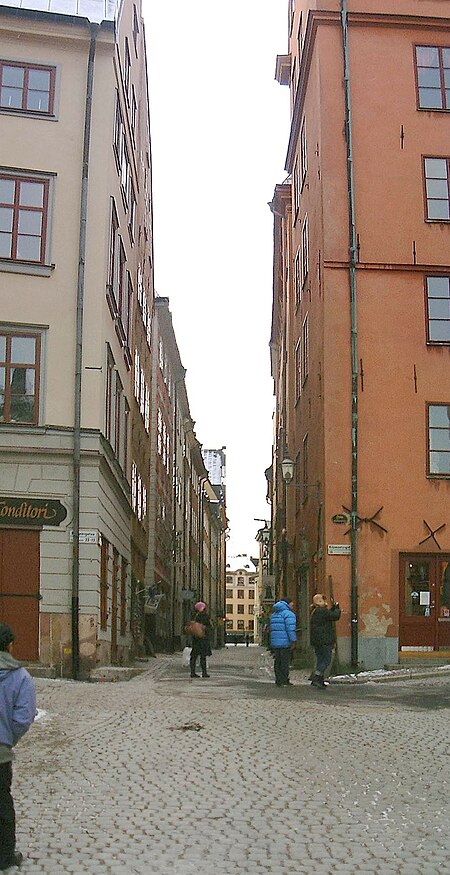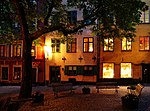Köpmangatan
Stockholm road stubsStreets in Stockholm

Köpmangatan (Swedish: "The Merchant Street") is a street in Gamla stan, the old town of Stockholm, Sweden. A parallel street to Trädgårdsgatan, it stretches from the central square Stortorget to Köpmantorget, intercepted by Trädgårdstvärgränd, Skeppar Olofs Gränd, Peder Fredags Gränd, Själagårdsgatan, Staffan Sasses Gränd, Baggensgatan, and Bollhusgränd.
Excerpt from the Wikipedia article Köpmangatan (License: CC BY-SA 3.0, Authors, Images).Köpmangatan
Köpmangatan, Stockholm Gamla stan (Södermalms stadsdelsområde)
Geographical coordinates (GPS) Address External links Nearby Places Show on map
Geographical coordinates (GPS)
| Latitude | Longitude |
|---|---|
| N 59.325083333333 ° | E 18.072333333333 ° |
Address
Köpmangatan
Köpmangatan
111 31 Stockholm, Gamla stan (Södermalms stadsdelsområde)
Sweden
Open on Google Maps










